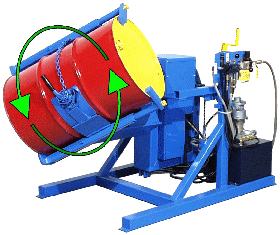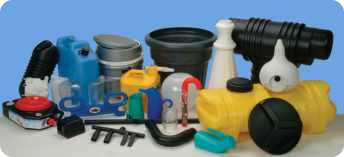Address
304 North Cardinal St.
Dorchester Center, MA 02124
Work Hours
Monday to Friday: 7AM - 7PM
Weekend: 10AM - 5PM
This technique is the most widely used and is successful for the majority of blow-molded parts. Housewares and toys can be handled entirely in this manner and in the container field only the specialty high pigment items require an alternate process. Industrial part coloring will depend on the customer specifications but dry coloring will again prove adequate in the majority of cases.
Pigment levels will range from 1%o per cent to 1 .5 per cent with the average falling at about 1 per cent.Pigment hiding power will be a controlling factor. Whenever possible a one or two-color component system should be used to prevent excess handling and to minimize the possibility of error.
Color matching in dry coloring can be done by a man within the blow-molding plant, but it should be remembered that numerous pigment suppliers offer a color-matching service. By means of this color matching it is usually possible to obtain a single-color component that will yield a satisfactory match.
 Color blending is obtained by a tumbling process; best results are usually obtained with an end over end drum tumbler. Metal containers with smooth internal surfaces are preferred, and ability to clean the container between color runs is extremely important. Regardless of drum size used for tumbling, it should never be loaded to more than 70 per cent of capacity to allow adequate mixing. Tumbling times are in the order of 20 to 60 minutes but must be uniform for a given color.
Color blending is obtained by a tumbling process; best results are usually obtained with an end over end drum tumbler. Metal containers with smooth internal surfaces are preferred, and ability to clean the container between color runs is extremely important. Regardless of drum size used for tumbling, it should never be loaded to more than 70 per cent of capacity to allow adequate mixing. Tumbling times are in the order of 20 to 60 minutes but must be uniform for a given color.
Pigment dusting in dry coloring has been a problem and often necessitates that the operation be isolated to prevent contamination. Recent advances by various color suppliers in the development of nondusting pigments has reduced this problem, however, and these colors should be used where possible. Other pigment developments such as micro pulverizing add to the ability to obtain good color dispersion.
Wetting agents are frequently necessary with pigments of the dusting type. The function served is to cause the color to adhere to the plastic pellet and therefore improve color distribution. Commercial wetting agents are available for this purpose.
 also controls the ability to obtain good color. The greater the mixing action of the machine and die the better will be the distribution. Basic rules call for high length to diameter screw ratios (20:1) and screen packs including at least as fine as 60 mesh. The injection-blowing process usually requires a nozzle dispersion disc of the single hole variety.
also controls the ability to obtain good color. The greater the mixing action of the machine and die the better will be the distribution. Basic rules call for high length to diameter screw ratios (20:1) and screen packs including at least as fine as 60 mesh. The injection-blowing process usually requires a nozzle dispersion disc of the single hole variety.
This technique employs the use of plastic material containing a high amount of pigment for blending purposes. The high pigment loading is usually obtained by the Banbury process. Color levels in the order of 10 per cent to 20 per cent are common, and these materials in a wide color range are sold by color compounders or raw material suppliers.
It is important that the polyethylene material used in the color concentrate is of the same density and melt index as that being used in the production job. If it is not the blow-molded part quality can be seriously affected. The concentrate supplier must be advised as to the production resin.
Color concentrates are produced by compounding the base polyethylene resin to contain about a 10 per cent loading with the desired color. This concentrate, converted to pellet form, is then tumbled with the natural base material in a 1 to 10 ratio. For every 100 pounds of the natural base, 10 pounds of concentrate is added and mixed. This technique of coloring is much
cleaner than dry coloring and is considered easier to use. The pigment loading of the concentrate, and the blending ratio with the base resin will of course vary from job to job.
The costs involved in concentrate handling are such that color itself will run about 2.5 cents per pound. The concentrate sells for approximately 20 to 30 cents above base material and the 1 to 10 blend ratio yields the unit cost.